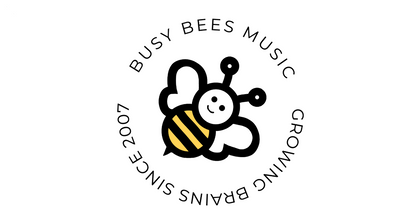
CLUB MARCONI, 121-133 PRAIRIE VALE ROAD, BOSSLEY PARK NSW 2176

Have you ever heard of 'The Rouge Test'? Its a fascinating test that was developed by psychologist Gordon Gallup Jr. in the 1970s as a way to study self-recognition in animals. Through Gallup's research with chimpanzees he found that they could recognise their reflection and respond to marks (of rouge) on their bodies. Over time, the test became a widely used tool in developmental psychology to understand when and how humans develop a sense of self.
Wait a sec. What is rouge? Interestingly, the test is named after the cosmetic used to create the mark on the child’s face. In the 1970s, people commonly referred to this as rouge. It is what we now simply call blush. The term reflects the era in which the test was created.
How Does the Rouge Test Work? Children generally begin to develop self-awarness around ages 18 - 24 months. At this time you can place a small mark on your kiddo's face, say on their nose or their forehead. (In the case of the research in the 70's, this would have been rouge but you can try toothpaste, a sticker or a smudge of yoghurt. Pop your kiddo in front of a mirror, and watch what happens. Do they notice the mark and attempt to touch their own face to remove it? This suggest they recogise the reflection as themselves.
This is a big cognitive milestone, marking the emergence of self-awareness – key to emotional and social development.
What can the Rouge Test tell me? Self-recognition is a window into your child’s growing brain. It lays the foundation for:
✔️ Empathy – Understanding that others have thoughts and feelings.
✔️ Language development – Using words like I, me, and mine.
✔️ Problem-solving – Seeing themselves as capable of taking action.
I put them in front of the mirror and nothing happened? Children develop at their own pace, and self-recognition can appear earlier or later than the typical window of 18-24 months. Some children may also react differently to the test because of their temperament, mood of the day or even an unfamiliarity with mirrors. The Rouge test is merely a guidepost and not a deadline so don't stress. You can try again in a few weeks or months and see what happens. You might even notice other signs that your kiddo is development self-awareness 👇🏻).
What are the other signs of emerging self-awareness? There are a few! Around the 18–24 month mark, you might notice your kiddo’s favorite word is ‘MINE’. This is a wonderful sign of self-ownership. You see up until this point, they’ve seen themselves as an extension of you (which is why they may have cried when you left the room). Before self-awareness emerges, they don’t fully distinguish between their own identity and the people who care for them. But as they start to assert their independence, ‘mine’ becomes a big part of their vocabulary - because suddenly, EVERYTHING is theirs! This is especially the case if there is a young sibling in the family, as they may feel the need to assert their individuality even more.
Another sign of emerging self-awareness is tantrums and the terrible twos. Remember, self-awareness begins to develop around 18 to 24 months, and the terrible twos often hit around that same time. Here’s the thing, though: if the terrible twos have arrived, it’s time to celebrate! Your child truly recognizes that they are an individual separate from you.
Power struggles and big emotions aren’t your kiddo being difficult on purpose; they’re just figuring out this newfound independence and understanding that they have their own opinions, desires, and ideas. All of this is part of the wonderful milestone of discovering who they are and how much control they have over their world.
How can i encourage self-awareness through musical play? You don’t need a formal test to foster self-awareness in your child—music and interactive play are powerful tools! Incorporate these ideas into your day for meaningful growth:
🎵 Mirror Music Play:Sing, dance, and make faces in the mirror together!
Try songs like If You’re Happy and You Know It, and modify the lyrics to fit different emotions. For example, If you’re mad and you know it, stomp your feet! or If you’re sad and you know it, get a hug! These kinds of songs help match emotions to expressions.
🎵 Body Awareness Songs: Use Heads, Shoulders, Knees, and Toesto enhance body awareness and encourage your child to identify different body parts.
🎵 Call and Response Songs: These songs help toddlers practice identity and self-expression. For example, sing:
Where is [insert your child’s name]? Here I am, here I am!
This Is the Way… I tap my toes, I clap my hands!
🎵 Musical Choices:Give them control! Let them pick an instrument or song so they can practice decision-making.
🎵 Name Their Feelings:Use music to explore emotions. Play fast vs. slow, happy vs. sad songs, and discuss how these songs make them feel.
🎵 Dance & Freeze:Moving their bodies to music strengthens body awareness and independence. Encourage them to dance freely and then freeze when the music stops!
By incorporating these musical activities into your daily routine, you can nurture your child's self-awareness while having fun together!
Emotional and cogntive development is a journey! Encouraging self-awareness in children is a vital part of their emotional and cognitive development. You can use the Rouge Test as a very basic way to understand where your kiddo is developmentally, but engaging in day-to-day play will go a long way in supporting your child in recognizing themselves as individuals. Exploring their emotions and asserting their independence are essential milestones that shape their understanding of themselves and the world around them. Embrace this journey with your little ones, as each step they take toward self-awareness helps them grow into confident, empathetic individuals.